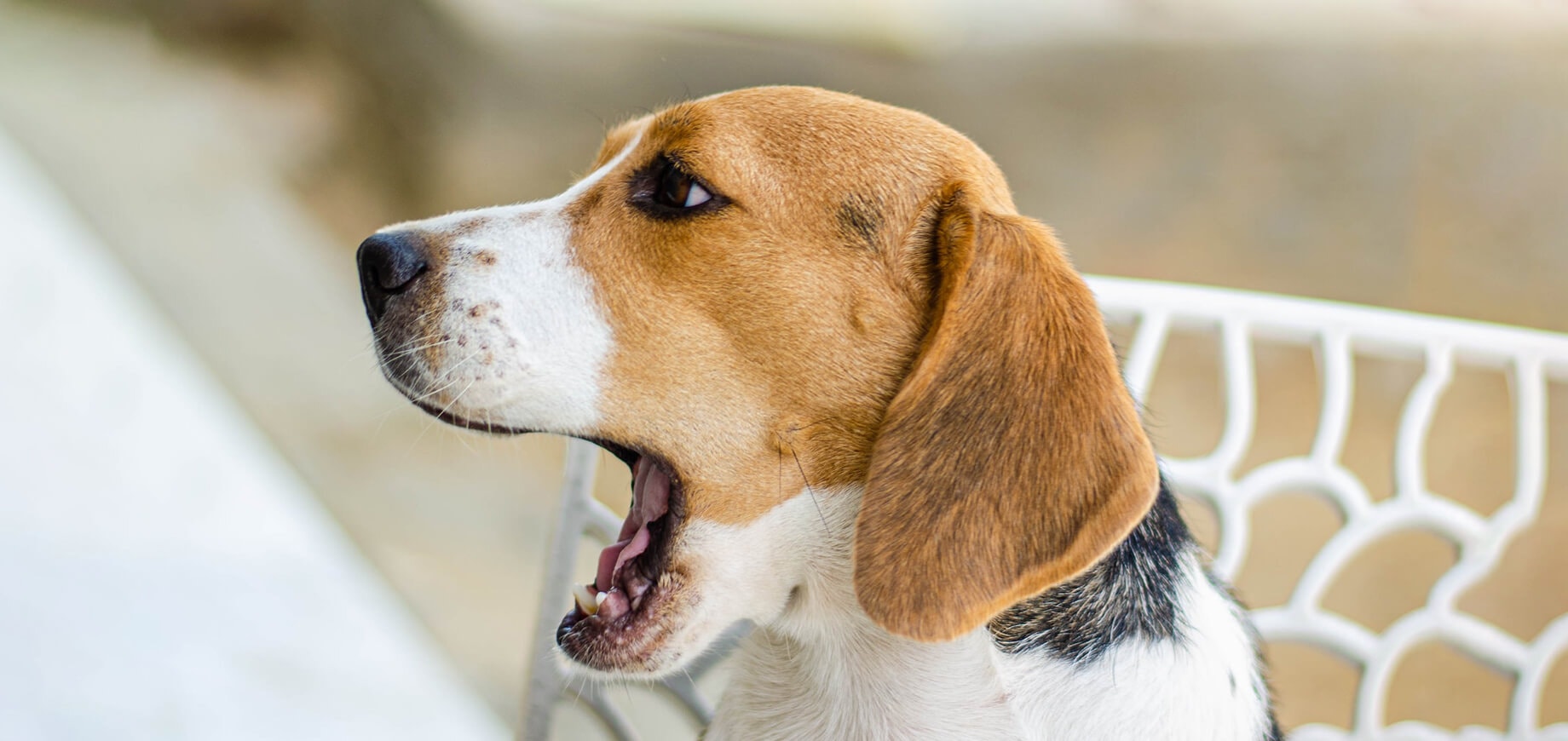

You’ve probably heard the term ‘dog breath’ before and there’s a reason why it’s used to describe unpleasant smells. While some odour from your dog’s mouth is normal, smelly dog breath can be a sign of an underlying illness. Causes of bad breath in dogs can vary from eating certain foods, poor oral hygiene, diabetes, kidney or liver disease. Looking after your dog’s dental health is essential to protect their overall well-being (as well as your nostrils) and avoid dental diseases, oral infections, and other health problems.
In this article, we discuss what causes bad breath in dogs and how to remedy the problem. We also advise on when you may need to consult a vet and what treatment options they may provide. If you notice your dog has bad breath, it’s important you don’t just brush it off (literally) as this may be a sign of other health issues that will need examining and treating by a vet. By informing yourself of the causes, risks and remedies of bad breath in dogs, you can better protect their oral health.
Bad breath in dogs, also known as halitosis, is often caused by the accumulation of bacteria in your dog’s mouth. We look at the different causes of smelly dog breath below.
The most common cause of bad breath in dogs is poor oral hygiene, as this can cause a buildup of plaque and tartar. This can cause periodontal disease, with inflammation and infection occurring in your dog’s teeth, gums (gingivitis) and surrounding structures. Besides bad breath in dogs, periodontal disease can also lead to abscesses, tooth decay and loss.
Kidney disease in dogs means their kidneys aren’t functioning as they should and therefore not removing toxins and waste from their bodies. This can lead to a buildup of toxins which can cause smelly dog breath, so if you notice this, you should take your dog to the vet immediately.
If your dog’s bad breath is particularly unpleasant, has started suddenly, and is accompanied by symptoms such as loss of appetite, vomiting or jaundice, they may be suffering from liver disease. This can be serious and your dog will need prompt veterinary care.
You’ll know if your dog’s bad breath is a sign of diabetes if it has a sickly-sweet scent to it, which will be due to the buildup of ketones in their bloodstream. Another common symptom of diabetes is weight loss, drinking and urinating more than usual. If you notice either of these symptoms, you’ll need to make an appointment with the vet.
Sometimes, bad breath in dogs can be caused by certain foods, unsanitary eating habits, and poor digestion. If your dog is eating leftovers from the bin, remains of a dead animal, or some type of animal poop, this can cause digestive upset and bad breath. You can remedy this by keeping these things out of your dog’s reach.
If this doesn’t sound like your dog, it’s possible your dog may have a digestive problem such as gastritis or inflammatory bowel disease, or a malabsorption issue which can lead to undigested food in the stomach and therefore bad breath. In either case, they’ll need to be assessed by a vet. We look further at what foods cause bad breath in dogs below.
You should feed your dog a complete and balanced diet that is appropriate for their age, size and dietary health, to ensure they receive all of the essential nutrition they require. However, if you choose to offer your dog human foods, they may have trouble digesting it which can also contribute to bad breath.
It’s important to feed your dog high-quality dog food, as this will be specially formulated to support their digestive, oral and overall health.
You can prevent bad breath in dogs with home remedies. The first step is to understand your dog’s teeth, as well as the do’s and don’ts on dental care for dogs. We’ve listed some tips below on how to remedy bad breath in dogs.
Brushing your dog’s teeth regularly
The best way to prevent bad breath in dogs is by establishing a regular dental care routine. You can begin brushing your puppy’s teeth from 6 weeks old, and starting early can help them get used to the sensation. Use a dog toothbrush with dog-safe toothpaste, and follow our guide on how to brush your dog’s teeth.
Using dental chews
You can give your dog dental chews for bad breath. Pedigree® Dentastix helps look after your dog’s oral health by keeping their teeth and gums healthy. With their gently-abrasive texture, these chews can reduce plaque and tartar build-up. Whether your dog is small, medium or large in size, you can find a Pedigree® Dentastix that’s appropriate for their mouth.
If your dog’s bad breath continues despite maintaining an oral care routine, or you notice any other symptoms or changes in behaviour, you may need to take them to the vet to assess whether there is an underlying issue causing it.
Symptoms such as red or inflamed gums, loose teeth, bleeding from the mouth, excessive drooling, pawing at mouth or signs of pain, may indicate your dog has an oral infection or dental problem that requires attention. If your dog’s bad breath is a sign of an illness, you may notice other symptoms. This may include a reduced appetite, weight loss, vomiting, diarrhoea, lethargy or changes in their urinating patterns. These symptoms may indicate diabetes, kidney or liver disease, and a veterinarian can examine your dog for this.
Depending on the reason, your vet can offer suitable treatment options for bad breath in dogs after a proper diagnosis. If periodontal or gum disease is the primary cause of your dog’s bad breath, they may recommend a professional dental clean to remove plaque and tartar. In cases where your dog has damaged teeth, an x-ray and/or tooth extraction may be necessary. For infections, your vet can prescribe antibiotics which should also resolve bad breath. Other health issues will require a specific treatment plan for your dog. In any case, it’s essential dog owners seek prompt veterinary care to treat bad breath in dogs.
While regular brushing is the best way to maintain your dog’s teeth, you can freshen up your dog’s breath in the meantime with Pedigree® Dentastix. Pedigree® offers a range of dental care products for small, medium and large dogs. Their abrasive texture is designed to gently remove plaque from your dog’s teeth, clean hard-to-reach teeth and support their gums as they chew. Pedigree® Dentastix Fresh range also contains green tea extract and eucalyptus oil, to help freshen your dog’s breath without brushing.

